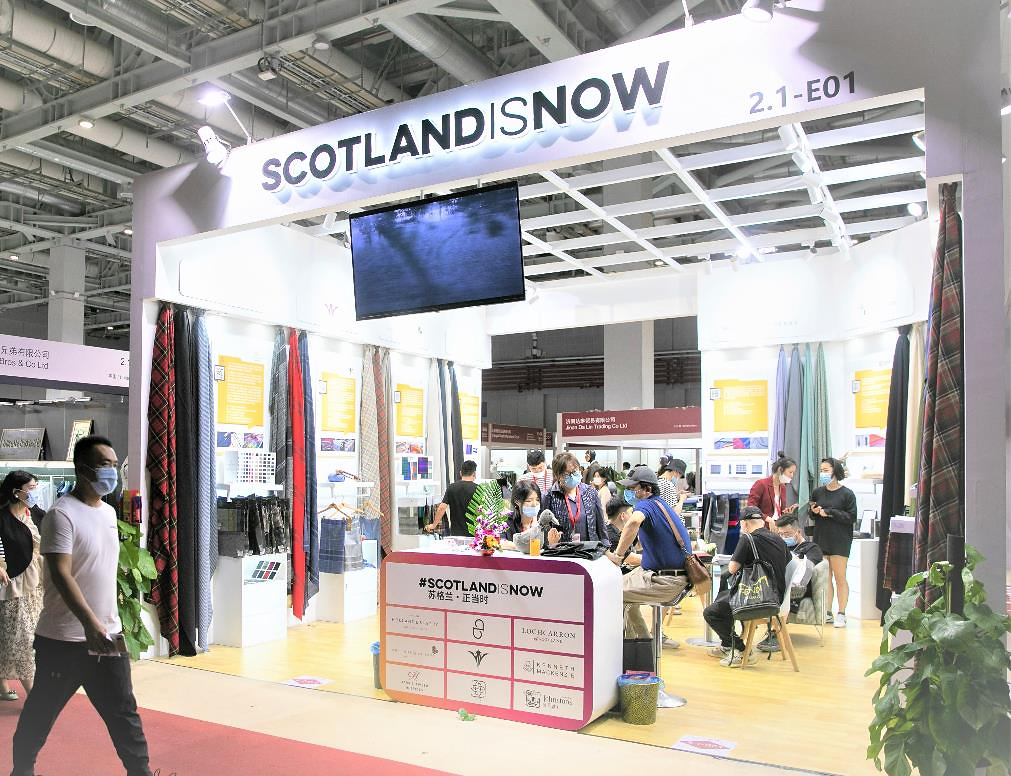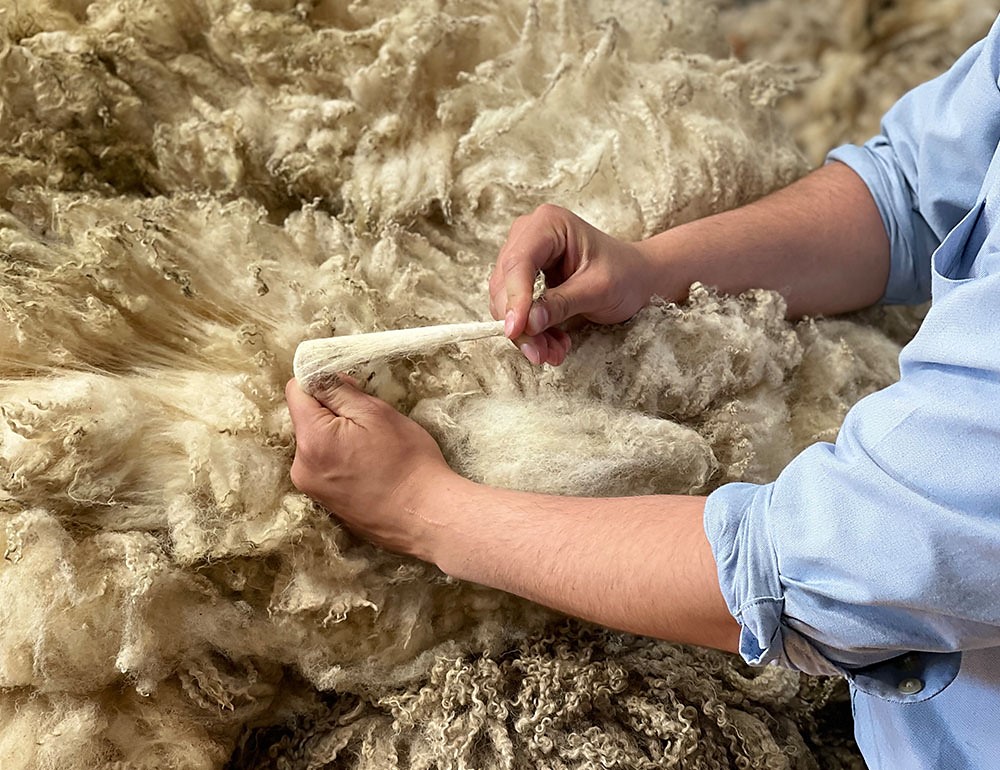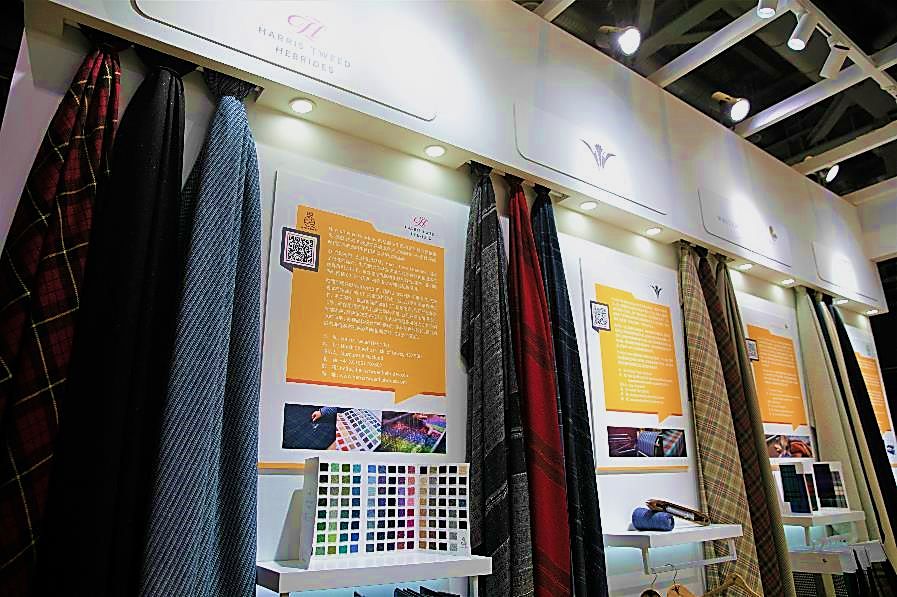
Ms Jo Cui, Trade Representative at Scottish Development International explained their role in promoting Scottish brands: “We are a local government agency that aims to help Scottish companies improve their international strategy, competitiveness and business opportunities. We’re excited to be here for the first time to represent nine Scottish mills and introduce their products to the Chinese market.”
The Scottish textile industry has long been associated with quality local craftsmanship and rich heritage ties to the country’s historical culture. Ms Cui pointed this out when highlighting what they believe are the key qualities of Scottish fabrics: “We describe our Scottish mills and products as having three stand-out characteristics, they are classic, premium, sustainable. In fact, six of the companies participating here have a history of more than 100 years, such as Lochcarron of Scotland, as well as Harris Tweed Hebrides; these companies provide the most classic and high-quality products.”
These mills pride themselves on the world-class reputation of their fabrics, meaning the products are suited towards the growing purchasing behaviour of millennial consumers who look for quality, authenticity and transparency in products. This goes hand in hand with rising levels of disposable income and the pursuit for a more premium and luxury lifestyle, which is driving the consumption of high-quality textile products in countries such as China, the US and also Europe.
The sustainability of their products has also become a crucial selling point for Scottish mills, which work almost exclusively with wool. In fact, Lochcarron of Scotland label their products the ‘antithesis of fast fashion’ and aptly so, considering the lifespan of wool garments is said to be 50% longer than cotton garments, according to a global wardrobe audit conducted by The Nielsen Company on behalf of The Woolmark Company. On top of this, wool is 100% natural and biodegradable, making it an obvious contributor to the circular economy model. So much so, that in the Material Circularity Indicator by the Ellen MacArthur Foundation, wool gets the highest score possible, above all other fabrics.
What’s more, in order to reduce their carbon footprint, Locharron of Scotland have switched to using locally-sourced wool. They also go the extra mile and reuse yarns in production, repurpose fabric remnants into accessories and recycle / donate any scraps that cannot be repurposed, so no material is wasted.
Meanwhile, Harris Tweed, made from pure British wool has been recognised as one of the world’s most durable fabrics which is handwoven in the Hebrides. Besides being locally crafted, an example of their efforts towards adopting sustainable processes is their policy to not bleach their yarns and only use dyes from the approved list of ZDHC (Zero Discharge of Hazardous Chemicals), to minimise their chemical footprint. They also use soft, clean Hebridean water which reduces the chemicals required in the production process.
So, just how were Scotland’s finest mills and fabrics received by visitors at Intertextile?
Ms Cui explained: “Yesterday, our booth was very lively and we met with lots of different buyers. We received lots of enquiries which we’ll relay back to the individual companies to follow up on and continue business discussions. The fair has undoubtedly provided many opportunities for Scottish brands here and the response from this edition has given us great confidence in the market, so we have already decided to join future editions of Intertextile Apparel.”
Visitors and exhibitors alike expressed their optimism for the future of the Chinese market at the fair. Many noted the increasing consumer demand for premium and quality products from both overseas and domestic brands. Meanwhile, the sustainability and traceability of products dominated requirements for buyers. Together, these factors indicate bright future prospects for Scottish and other international suppliers in China’s apparel textile industry.
Scottish Development International joined SalonEurope at Intertextile Shanghai Apparel Fabrics 2021. The dedicated zone featured exhibitors showcasing quality products from Belgium, Denmark, France, Germany, Italy, the Netherlands, Spain, Switzerland, Turkey and the UK. In total, the fair welcomed nearly 3,300 exhibitors from 19 countries and regions, and over 67,000 buyers. The upcoming Spring Edition will take place from 9 – 11 March 2022 in Shanghai.
Download
- ITSA21-CS1-En (pdf, 843 KB)
- ITSA21-CS1-image-1 (png, 1 MB)
- ITSA21-CS1-image-2 (png, 622 KB)
- ITSA21-CS1-image-3 (jpg, 241 KB)
- ITSA21-CS1-image-4 (png, 1 MB)


